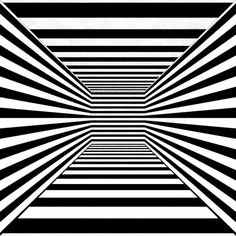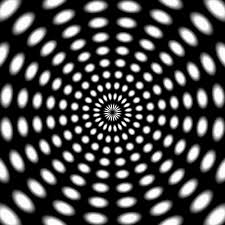|
LITR 4368 Literature of the Future |
Sample answers
for Essay 1:
|
 |
Kerisha Loctor
December 7, 2017
Imaginative Predictions of our Future
Everyone has an idea of what the future holds. Though these ideas may
differ, they seem to be derive from four distinct kinds of scenarios: high tech,
low tech, utopia/dystopia/ecotopia, and alien contact. Scenarios refer to a
description of an imagined situation or sequence events that outline a possible
sequence of events. The scenarios mentioned may seem like farfetched ideas in a
realistic world, but each hold promise of happening.
The high tech scenario, often discussed alongside virtual reality, is the
idea of technology being the main substance of the future, in which everything
is dependent on it. Virtual reality is specifically a mimesis (media simulation)
of actual reality. One of the most prominent features of high tech is the
cyberpunk style. “Cyberpunk” is a combination of the words “cybernetic,” which
means artificial intelligence or computer systems, and “punk,” which means
street style or semi-outlaw; therefore, cyberpunk refers to a style that boast
high technology and a low life status. In the text, “Johnny Mnemonic,” the
high-tech qualities can be seen in the description the main character uses to
describe his “hundreds of megabytes [of memory]” that he has in his head. The
low life quality is seen in the setting, for example, “generations of
sharpshooters had chipped away at the neon until the maintenance crews gave up.”
The
personalities and demeanors of the characters in high tech scenarios are another
giveaway to the cyberpunk style. Male characters are usually depicted as
computer nerds while females are depicted as an icon/celebrity image or a
warrior-chick. In the short story, “Burning Chrome,” one of the male characters,
Bobby, is described as a “thin, pale dude with the dark glasses.” Chrome is a
female that “looked fourteen as for as long as anyone could remember…she was one
of the Boys…a member in good standing of the local Mob subsidiary,” fitting the
“warrior-chick” persona found in the high tech scenario. The technology aspect
of the high tech scenario is comparable to the low tech scenario, but there are
major differences between the two.
The
low tech scenario is often connected to actual reality. Low tech has a stronger
focus on biological human existence such as: family relations with more
inclusion of females and children and real food versus synthetic food. In
“Drapes and Folds,” the main character, Pearl, who has a granddaughter that was
a “ghastly mix of human and roboid” (VN 129) with whom she desperately tries to
make a personal connection. At the end of the story, it seems Pearl was
successful in creating a connection stating, “I leaned my head on my
granddaughter’s shoulder…Beneath the cool volymer…she carried my message. I
pulsed inside her, warm as blood” (VN 139).
“Drapes and Folds” also feature another important feature of low tech – the use
of synthetic food over real, organic food, seen when the characters “likked”
from nipples; but the short story, “The Onion and I,” is based over synthetic
food concept. In this story, the setting is one of an immersion into a virtual
environment, Cyberspace, where anything is possible and within this environment,
the people are to eat cyber food. The main character’s father was originally a
farmer before the integration into Cyberspace; therefore, he knew the taste of
onions, and missed it, showing signs of depression, saying “a Cyberonion is not
a real onion. A real onion can make you cry,” (VN15). The emotional feel found
in the low tech scenario can be found in the utopia scenario and its subgenres,
but there lies differences.
The
utopia scenario consists of two other subgenres: dystopia and ecotopia. The
characters of utopian scenarios lose their individualism and are portrayed as
communities. Specifically, dystopia refers a utopian world that has collapsed or
a world that comes before or after an apocalypse. The characters of dystopian
novels are also portrayed as strong, rebellious individuals but would gather
together in the name of survival. In “Speech Sounds,” the use of language has
gone obsolete. At the end of the novel, the main character, Rye, comes across
children that possessed the ability to speak but chose not to in fear; however,
Rye urged them to speak saying, “I’m Valerie Rye. It’s all right for you to talk
to me” (VN 108).
Ecotopia is another genre of the utopian scenario that is similar to dystopia.
The ecotopian world is one that has low-tech human values with some high-tech
gadgets and show more concern and consideration to the environment. “Chocco” is
a ecotopian-style story in which the characters of the community recognize and
appreciate the environment for providing their sustenance; they refer to
themselves as the “River People” and show the most respect to the Sun, which is
“the source of the ultimate good, life—but also of death” (FP 190). In this
world, technology brought the downfall of humans because the Machine People,
their ancestors of the modern world, became “[in]competent to insure their own
biological survival” (FP 196).
“House of Bones” takes place in the past
and being told by a narrator that traveled to that time period from the future;
though, this story technically takes place before technology, the technology
that brought the time traveler to the past failed and left him abandoned in the
past. The dependent and appreciation of nature in this story. The tribe “hunt
huge woolly elephants and build houses out of their whitened bones” (FP 90). In
this story, especially, the community aspect is strong, emphasizing the
ecotopian style. Each person has a
different name for one another; no one knows the real name of a person except
the person him or herself. Even the reason behind this strange system symbolizes
the ecotopian style that if anyone finds out the reals names “every ghost from
Cornwall to Vladivostok” would haunt him or her (FP 93). Technology seems to be
a huge part of future scenarios, so the last scenario is certainly a possible
one—alien contact.
The
alien contact scenario, the most popular of the future scenarios, consists of
stories that include humans encountering aliens, mostly because of curiosity
from each party. The aliens are either friendly or villains; however, no matter
their personality, they are the invaders and explorers of planet Earth,
sometimes leading to a dystopia. In the story, “The Poplar Street Study,” the
aliens were not exactly friendly, but they were oppressive and experimented on
the humans conducting “physicals…balance tests, reflex tests, and
questionnaires” (VN 154). There is the other side of alien contact in which the
humans are the ones doing the exploring and experimenting. The humans of the
story, “Hinterlands,” discovered a way to travel through space and collect
artifacts of alien contact, such as “Olga’s seashell.” Though the curiosity is
the same among humans and aliens, it appears, according to “Hinterlands,” aliens
fare better in space travel than humans. Whenever the humans return back from
space travel, they are either “live…DOA…[or] automatic candidates for Wards…”
The alien-contact is the most interesting yet farfetched scenario, but could it
not be possible?
Stories of the future are usually told using one or a mix of four scenarios: the
high-tech, the low-tech, the utopia/dystopia/ecotopia, and the alien contact
scenarios. The future is unpredictable yet with active imaginations, ideas are
constantly being told through media and literature. Technology is already vital
to the modern world, could then society not become overly dependent on
technology? Technology is manmade; therefore, there is a chance of failure which
can lead to a low-tech or utopian/dystopian future. Though it seems unlikely,
alien contact may not be such an unbelievable idea since the universe is so vast
and unknown to humans. Society is only left to dream and imagine what the future
may be like.




